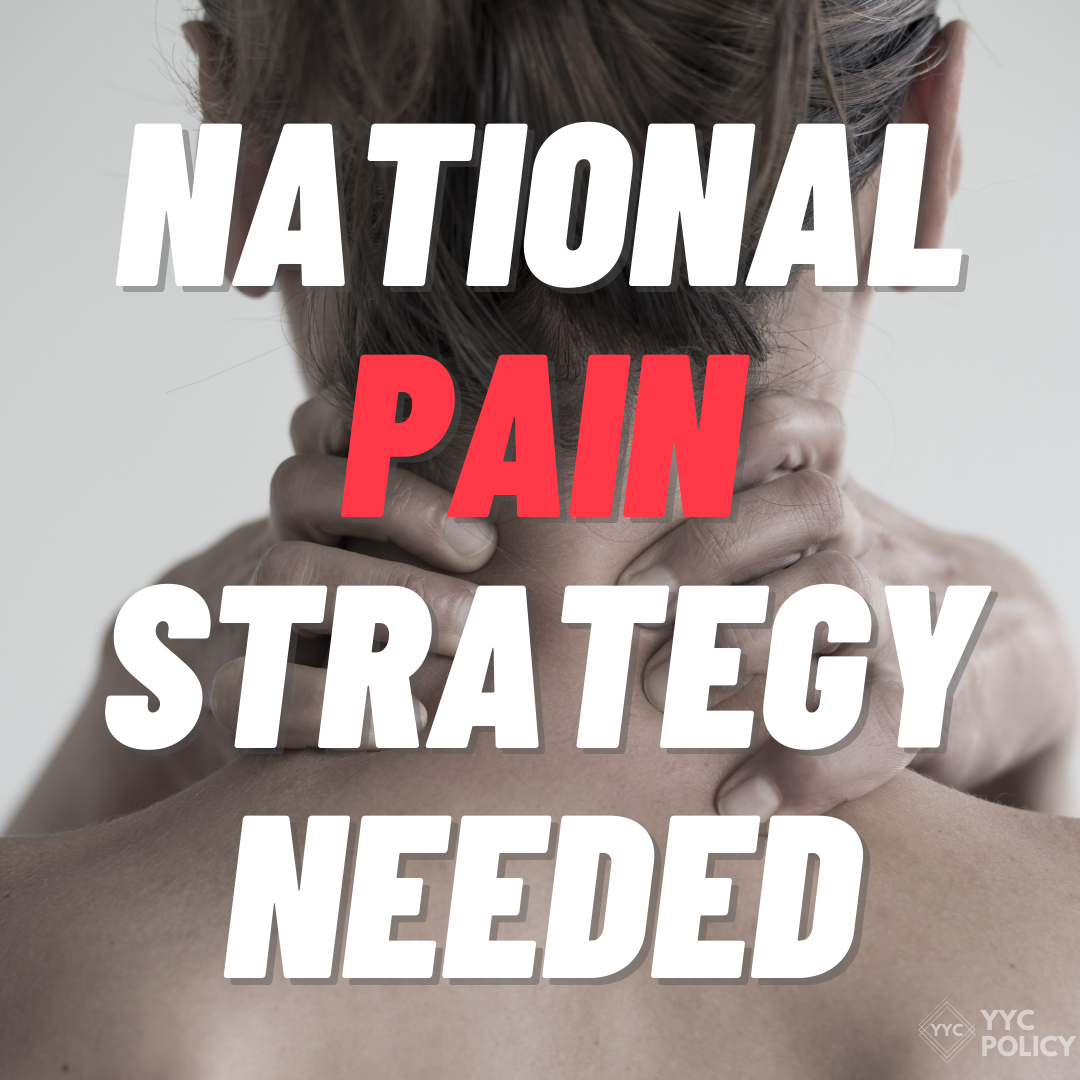Immediate National Pain Strategy is Desperately Needed for an Invisible Epidemic
The COVID-19 pandemic and the Opioid crisis have made it evident that physical and emotional isolation is making the treatment of chronic pain more challenging. Chronic pain has been linked to mobility deficits, poor socioeconomic conditions, lack of access to healthcare and increased opioid dependence. These correlations have always existed, but the pandemic has shed light on and intensified these conditions. Canada desperately needs a national pain strategy.
Persistent pain is like a software failure that causes your computer to freeze or crash. If you run diagnostics on your computer, it is almost always a software error and not a hardware issue. Chronic pain is a problem with the software. The hardware in the body (bones, muscles, organs) works fine, but the software, that sends signals to the hardware, has a glitch. It is an invisible disease that is frequently mismanaged.
The Current Situation of Chronic Pain in Canada
The current Canadian health care system mismanages invisible diseases, creating unequal access to affordable healthcare. Reasons for the mismanagement are lack of pain education in graduating health care professionals and utterly inadequate funding for pain research leading to under-recognition and misdiagnosis of the disease. The Canadian Pain Society conducted a survey for pain related research. In the past five years, a total of approximately $80.9 million in funding was granted to pain researchers. To put this into perspective, this amount is less than 1% of the total funding from the Canadian Institutes of Health Research and 0.25% of the total funding for health research.
The magnitude of the problem is increasing. 1 in 5 Canadians are estimated to be suffering from chronic pain. Pain is the prevalent complaint of over 78% of emergency hospital visits, with $7.2 billion in annual direct costs. Pain places a massive financial burden on millions of Canadian patients, families, caretakers, and the economy.
The after-effects of not being able to access immediate medical attention for pain can be serious. According to Quebec’s Ministry of Health, an estimated 4,100 people may have gone without cancer diagnoses for 5 months between March and July of 2020, due to the health restrictions with the first wave of Covid-19. Patients waiting for a medical assessment often report high levels of pain that interfere with their ability to function. A U.S. study has shown that undiagnosed, severe pain is correlated with increased levels of depression in 50% of patients and suicidal thinking in 34.6% of patients. This increases the risk for opioid addiction or overdose.
National Pain Task Force and Alberta Pain Strategy
The complexity of chronic pain and the opioid crisis emphasized the need for a national initiative to evaluate and better understand and address the needs of Canadians who live with pain. A National Pain Task Force was announced by the Government of Canada in 2019. The Task Force has a three-year mandate to assess the situation, conduct national consultations involving the pain community and provide recommendations. This is a truly promising development.
On a provincial level, the Government of Alberta has endorsed the Alberta Pain Strategy authored and created by The Pain Society of Alberta, with joint efforts of different stakeholders from Alberta including Health Services (AHS). The Alberta Pain Strategy advocates for accessible and improved pain management recognizing the need for an interdisciplinary team approach and evidence informed treatments. The provincial endorsement of the Pain Strategy is a tremendous step in the right direction. Alberta Pain Society is currently working in partnership with Alberta Medical Association (AMA) to attract more doctors to rural Alberta creating more opportunities for pain management in those communities. Additionally, they are working to put forward better models of physician payment that help facilitate primary care and specialist treatments, including opioid prescribing practices.
On March 30, 2020, Health Canada announced that AHS will receive $1.2 million from the federal government to implement and evaluate pathways to care for chronic pain patients and those who suffer with opioid use disorders. However, these strategies are by no means binding and $1.2 million is not sufficient for researching and understanding the software complexities of our bodies and providing an improved holistic accessible health care for pain patients.
The pandemic combined with the current opioid crisis has emphasized the necessity for an immediate national pain strategy and concrete steps to implementation. The next step for Alberta is to implement the Alberta Pain Strategy with effective policy changes in Alberta’s health care system. The Government of Canada and Government of Alberta can solidify and boost their acknowledgement for the need of such a strategy in these tough times by encouraging deeper research, improved funding, and working simultaneously with the provinces for immediate, comprehensible steps with policy changes.
About the Author: Lin Al-Akkad is an MPP student at the University of Calgary. She has a Bachelors degree in economics. She worked in finance in the private and public sectors and she currently is a research assistant at the University of Calgary. Health policy, urban policy, labour economics, interprovincial trade and economic development are some of her many interest areas.

